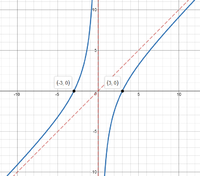Hi again math help community.
I was wondering how do you find the range for this kind of functions:
f(x)= x-(9/x), if x∈ (0 , 5(
To me the problem for this function is the second degree polynomial on the numerator.
x-(9/x) = ((x^2) -9)/x
I have no clue how to do this, please help.
I was wondering how do you find the range for this kind of functions:
f(x)= x-(9/x), if x∈ (0 , 5(
To me the problem for this function is the second degree polynomial on the numerator.
x-(9/x) = ((x^2) -9)/x
I have no clue how to do this, please help.

